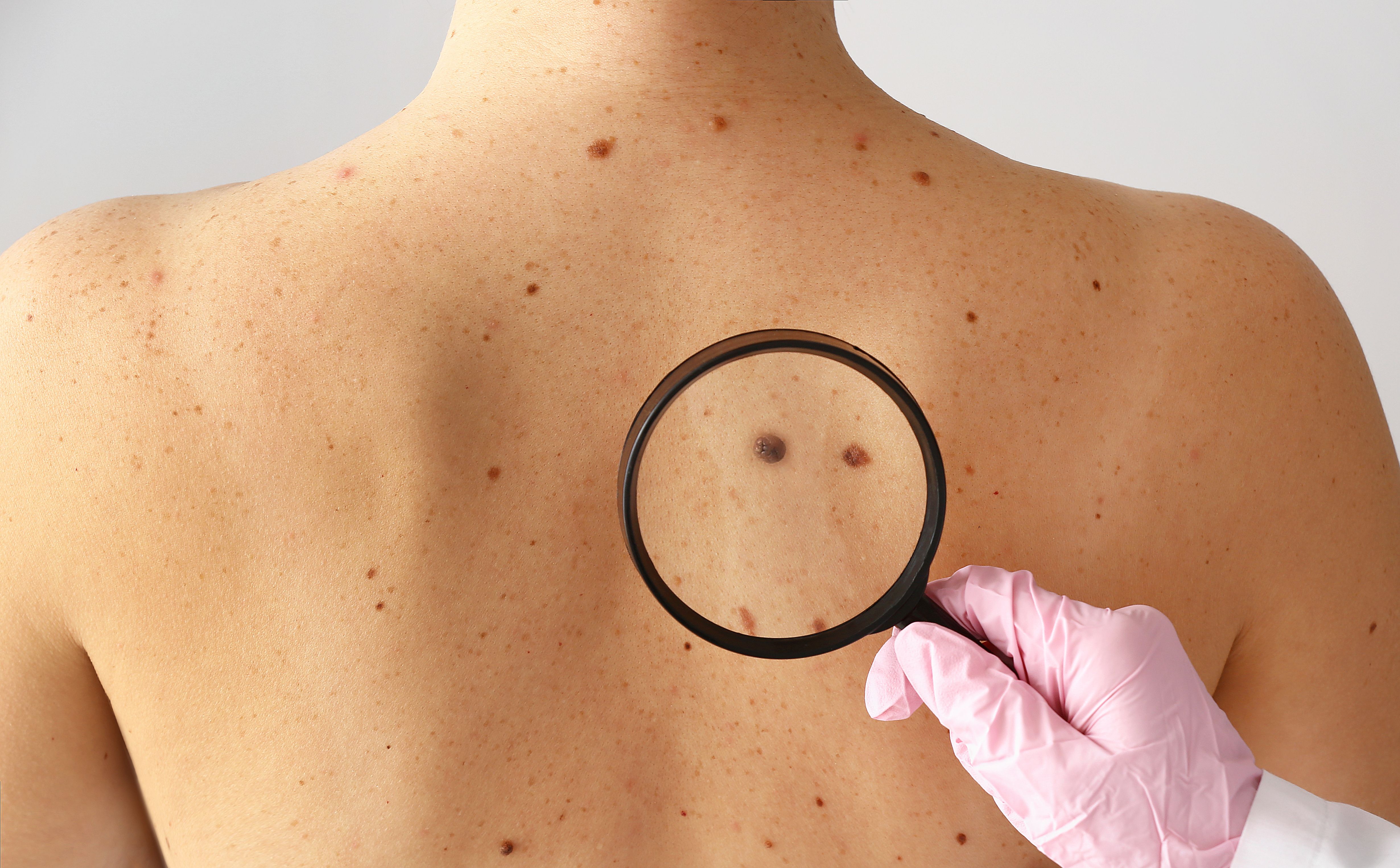- General Dermatology
- Eczema
- Chronic Hand Eczema
- Alopecia
- Aesthetics
- Vitiligo
- COVID-19
- Actinic Keratosis
- Precision Medicine and Biologics
- Rare Disease
- Wound Care
- Rosacea
- Psoriasis
- Psoriatic Arthritis
- Atopic Dermatitis
- Melasma
- NP and PA
- Skin Cancer
- Hidradenitis Suppurativa
- Drug Watch
- Pigmentary Disorders
- Acne
- Pediatric Dermatology
- Practice Management
- Prurigo Nodularis
Article
Relationship between serum vitamin D levels, melanoma remains uncertain
Because the impact of elevated vitamin D levels in areas other than bone health has yet to be established, an expert recommends oral supplementation and maximum sun protection for patients with melanoma.
Detroit - Because the impact of elevated vitamin D levels in areas other than bone health has yet to be established, an expert recommends oral supplementation and maximum sun protection for patients with melanoma.
“Vitamin D and health is a very broad topic, and an ever-changing topic. Every other week, there is at least one publication on the subject,” says Henry Lim, M.D., chairman and C.S. Livingood Chair, department of dermatology, Henry Ford Hospital, Detroit.

Dr. Lim
“There are quite a number of conditions in which there seems to be some association with vitamin D,” but the nature and strength of the association remains unclear, he explains. Regarding melanoma in particular, one study showed based on participants’ serum levels of 25(OH) D that patients with melanoma had higher levels of UV exposure the summer before diagnosis than did control patients (Idorn LW, Philipsen PA, Wulf HC. Br J Dermatol. 2011;165(1):164-170). “That’s not surprising,” he says.
Conversely, other studies have linked elevated serum vitamin D levels with thinner tumors and better survival (Newton-Bishop JA, Beswick S, Randerson-Moor J, et al. J Clin Oncol. 2009;27(32):5439-5444). And in another study, researchers showed that patients with low vitamin D levels were more likely to have more advanced disease and earlier metastases (Nürnberg B, Gräber S, Gärtner B, et al. Anticancer Res. 2009;29(9):3669-3674).
In a case-control study that included 960 melanoma cases, “Researchers found that sun-sensitive phenotypes and a history of sunburns were associated with increased melanoma risk,” Dr. Lim says. “They also found that regular weekend sun exposure during warmer months appeared to be protective against development of melanoma (Newton-Bishop JA, Chang YM, Elliott F, et al. Eur J Cancer. 2011;47(5):732-741). The authors speculated that this could be due to photoadaptation in the skin of these patients or due to higher vitamin D levels,” though they did not measure these levels.
Additional studies
The largest study of skin cancers and sun exposure involved the Women’s Health Initiative database of 36,000 postmenopausal subjects. Half of the women took 1,000 mg of calcium and 400 international units (IU) of vitamin D daily, versus placebo taken by a control group.
At a mean follow-up of seven years, “Investigators found that there was no difference in melanoma rates or the incidence of nonmelanoma skin cancer (NMSC; Tang JY, Fu T, Leblanc E, et al. J Clin Oncol. 2011;29(22):3078-3084),” Dr. Lim says. “On the other hand, they also found that in women with a history of NMSC, calcium and vitamin D appeared to reduce melanoma rates. It’s not completely clear, but this largest study shows that there’s no significant association between vitamin D and rates of melanoma or nonmelanoma skin cancer.” These findings require further confirmation, Dr. Lim adds.
In another study, investigators tracked subjects’ serum 25(OH) D levels between 1997 and 2001 and used retrospective analysis and surveys to determine how many patients developed NMSC between 1997 and 2009. “This study showed that a vitamin D level of greater than 15 ng/mL was positively associated with NMSC, including cancers that presented at less UV-exposed sites (Eide MJ, Johnson DA, Jacobsen GR, et al. Arch Dermatol. 2011;147(12):1379-1384),” Dr. Lim says. “However, UV exposure is possibly a significant co-founder in this study.”
Regarding sun exposure and vitamin D, multiple reports worldwide have shown that 50 percent of individuals living in sunny climates have inadequate serum vitamin D levels (defined as 75 nmol/L at the time the studies were conducted; Lim HW, Sage RJ. Dermatol Ther. 2010;23(1):1). “Factors that may account for this finding include photoprotection, age, obesity and inadequate dietary supplementation,” Dr. Lim says.
Age and obesity impacted participants’ serum vitamin D levels. “As one gets older, the ability of the skin to synthesize vitamin D decreases. Obese patients tend to have lower vitamin D levels because vitamin D is a fat-soluble vitamin,” he explains.
A more recent review measured average serum vitamin D levels in the northern hemisphere (from Miami to Norway) against a cutoff of 50 nmol/L, which was set in November 2010 by the Institute of Medicine (IOM). Despite some seasonal and latitudinal variances, “This review showed that in the winter, as well as in the summer, average vitamin D levels are not too far from this level (Diffey BL. Photodermatol Photoimmunol Photomed. 2010;26(4):172-176),” and are therefore roughly adequate year-round, based on the new IOM recommendation, Dr. Lim says.
Sunscreen and serum levels
As for sunscreen, “It is quite well-known that in the controlled laboratory setting, studies show that applying (predominantly UVB) sunscreen with a sun protection factor (SPF) as low as 8 will significantly suppress the increase in serum vitamin D levels after one minimal erythemal dose of simulated sunlight exposure (Holick MF. Am J Clin Nutr. 1994;60(4):619-630. Review),” he adds.
Outside the laboratory, studies have shown that people who practice rigorous sun protection tend to have low serum vitamin D levels (Cusack C, Danby C, Fallon JC, et al. Photodermatol Photoimmunol Photomed. 2008;24(5):260-267; Holme SA, Anstey AV, Badminton MN, Elder GH. Br J Dermatol. 2008;159(1):211-213). However, Dr. Lim says, a key review showed that although sunscreen use under strictly controlled conditions can decrease serum vitamin D levels, sunscreen use as normally practiced by the general public generally does not result in vitamin D insufficiency (Norval M, Wulf HC. Br J Dermatol. 2009;161(4):732-736).
“This is further confirmed by a subsequent study,” Dr. Lim says. In this study, “Seeking shade or wearing long-sleeve shirts was significantly associated with lower serum vitamin D levels. However, frequent sunscreen use resulted in no association with vitamin D levels (Linos E, Keiser E, Kanzler M, et al. Cancer Causes Control. 2012;23(1):133-140).” These findings probably stem from the fact that in-use SPF is much lower than that achieved in the laboratory because people generally apply less than half of the 2 mg/cm² used for SPF testing, he says.
Regarding skin type and vitamin D, Dr. Lim says that perhaps the clearest study, conducted during winter in Toronto, showed an inverse relationship (Gozdzik A, Barta JL, Wu H, et al. BMC Public Health. 2008;8:336). Accordingly, “Skin type definitely plays a role in the body’s ability to synthesize vitamin D from sunlight,” he says.
IOM recommendations
In light of these findings, the best data upon which dermatologists can base recommendations for their patients comes from the IOM (Ross AC, Manson JE, Abrams SA, et al. J Clin Endocrinol Metab. 2011;96(1):53-58), Dr. Lim says. “Their recommendation is based on data on skeletal health. That’s the strongest piece of evidence” showing an association between vitamin D levels and any health outcome.
“Furthermore, the IOM recommendations make a very important assumption: that individuals would have minimal or no sun exposure,” he adds. The IOM made this assumption partly because it recognizes the side effects sun exposure can create within the skin. “Also, making this assumption completely removes the effect of skin type” and any outdoor activities in which people may engage.
“The IOM moreover concluded that for extra-skeletal outcomes, evidence was inconsistent, inconclusive and insufficient to make public health recommendations,” Dr. Lim says. Accordingly, the IOM recommends daily vitamin D intake of 400 international units (IU) for infants less than a year old, 600 IU for people ages 1 to 70 years, and 800 IU for those over age 70.
Additionally, the IOM report noted a serum vitamin D level of 20 ng/mL (or 50 nmol/L) would cover the needs of 97.5 percent of the population. “Prior to this report, many studies and commercial laboratories were using 30 ng/mL as the cutoff,” Dr. Lim says. The IOM also cautioned that serum vitamin D levels chronically above 50 ng/mL (125 nmol/L) carry potential adverse effects.
The IOM also defined upper intake levels - the highest daily intake likely to pose no risk - between 1,000 and 4,000 IU based on age. Dr. Lim says that 1,000 to 2,000 IU per day is likely to be very safe, although the benefits are unclear. “Data show that taking up to 10,000 IU daily produces no ill effects. However, we don’t know how long it’s safe to take 10,000 IU daily,” he says.
Regarding UV exposure as a potential source of vitamin D, “We all know that UV is carcinogenic, whether it comes from the sun or tanning beds (El Ghissassi F, Baan R, Straif K, et al. Lancet Oncol. 2009;10(8):751-752; Lim HW, James WD, Rigel DS, et al. J Am Acad Dermatol. 2011; 64(5):893-902). Therefore, it’s inappropriate to recommend intentional exposure to natural or artificial UV to achieve adequate vitamin D levels,” Dr. Lim says.
For melanoma patients, like anyone else, “Photoprotection is a must. Keep in mind the total package: seeking shade between the hours of 10 a.m. and 2 p.m. and wearing sunscreen and photoprotective clothing, including hats and glasses,” he says. DT
Disclosures: Dr. Lim is a consultant for La Roche-Posay/L’Oréal, Clinuvel and Procter & Gamble. He is an investigator for Clinuvel, but reports no relevant financial interests.





